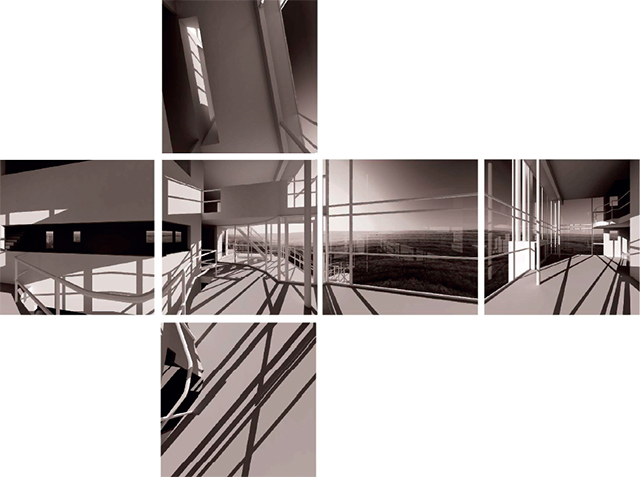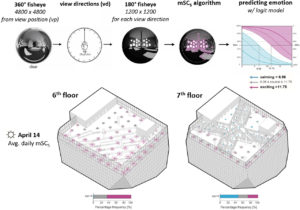
PhD Thesis by Dr. Siobhan Rockcastle, Laboratory of Integrated Performance in Design (LIPID), EPFL
In our experience of daylit architecture, our visual perception is greatly impacted by the ephemeral and inherently dynamic conditions of the surrounding environment. Driven by changes in sky type, time-of-day, and time-of-year, these variable conditions can alter our impressions and appraisal of indoor space. Daylight, including both direct sunlight and indirect skylight, drives a powerful range of perceptual phenomena, which transform structured geometry into a time lapse of slow and smooth or fast and harsh ethereal effects. Between the disciplines of architectural design and building engineering, there are many approaches to evaluating daylight performance, from qualitative considerations such as texture, color, spatial depth, and ambiance to compliancy targets regarding task performance, energy, and visual discomfort. While some of these considerations, like visual discomfort, are both quantitative in prediction method and qualitative in subjective evaluation, there are few quantitative measurements developed to predict the positive perceptual impacts of light on human perception. Unlike other environmental factors like temperature, air quality, and sound, daylight creates direct impacts on the appearance of a space and cannot be divorced from the simultaneously aesthetic implications it has on architectural design. Research in daylight is therefore necessarily interdisciplinary, as it integrates physics, with the psychology of emotion, the bio-mechanics of perception, and the aesthetics of architectural design.
To integrate perceptual, aesthetic, and emotional considerations into lighting performance evaluation, the aim of this thesis is to determine whether objective, quantifiable characteristics of luminous composition within an architectural scene can be linked to subjective evaluations of visual interest (like contrast, excitement, pleasantness, etc) and whether these characteristics are sensitive to temporal dynamics. This thesis begins with a review of existing quantitative measures for predicting contrast perception in daylit scenes (both real and digital) and presents a comparison of these measures using a catalogue of rendered scenes.
Through a pair of experiments designed to induce visual effects and record subjective responses – an online survey using 2D renderings and an immersive 3D study done in Virtual Reality -, this doctoral thesis introduces a method for predicting those perceptual responses using image-based algorithms and a proportional odds model. Using the algorithms and model developed from experimental data, a visually immersive, simulation-based approach is adopted for evaluating and visualizing predictions of visual interest and excitement through space and over time. By selecting a series of architectural spaces to exemplify this approach, dynamic predictions of daylight-induced excitement across an array of eye-level view positions show the highly variable nature of perceptual performance and its capacity to impact occupant appraisals of space.
The novelty of proposed measures, prediction model, and simulation-based approach provides an exciting new frontier in daylight performance evaluation, giving rise to the importance of occupant perception alongside existing task, energy, and comfort considerations.




